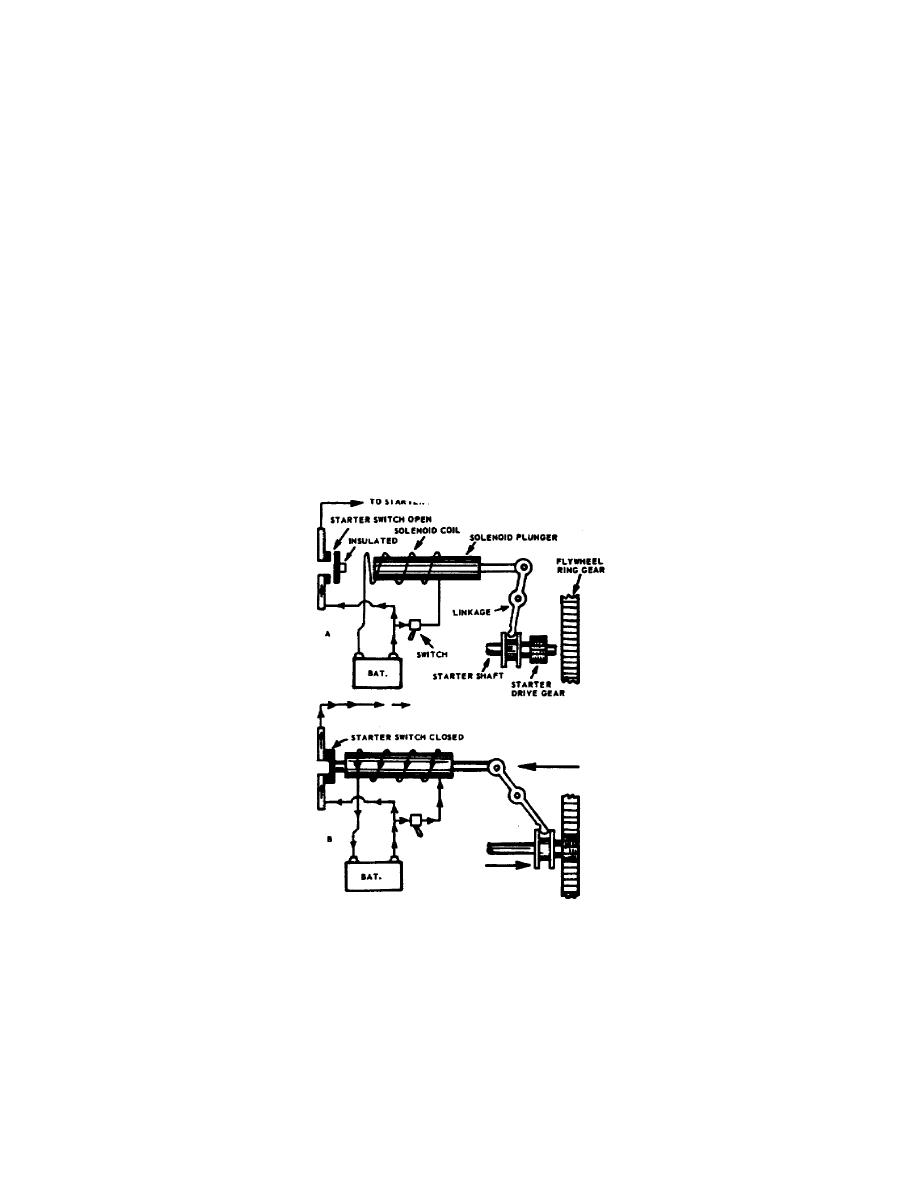
(3) You can easily test the action of the clutch by gripping the sleeve
with one hand and the pinion with the other. Try to turn the pinion in either
direction. You will find you can turn it one way, but when you try to turn it the
opposite way, it locks. In fact, if you can turn it both ways it is defective and
must be replaced.
(4) A shift lever (also called a yoke lever) is used with the over-
running clutch to shift the starter pinion into mesh with the flywheel gear. The
lever may be operated manually through linkage or by an electromagnet.
d. When the over-running clutch type is used, a shift fork and linkage are
used to shift the pinion into mesh with the flywheel gear. This shift fork and
linkage are normally operated by a unit called a solenoid.
(1) A solenoid is an electromagnet with a moveable core or plunger. It
is mounted on top of the starter motor. When the starter switch on the vehicle
instrument panel is depressed (in some cases a key operated switch is used), the
windings in the solenoid create an electric magnet.
(2) In view A of figure 6 the shift plunger is in its released position,
being held there by the contact plunger spring. No current is flowing because the
switch for the solenoid winding is open. The starter pinion is not engaged with
the flywheel. In view B the operator has closed the switch to the solenoid
windings and the solenoid coil is now an electromagnet. The electromagnet pulls
the solenoid plunger to the left. This action shifts the pinion into mesh with the
flywheel and then closes the starter switch. Now current flows through the starter
motor causing the armature to rotate.
Figure 6.
Shift plunger.
OS 010, 6-P7




 Previous Page
Previous Page
